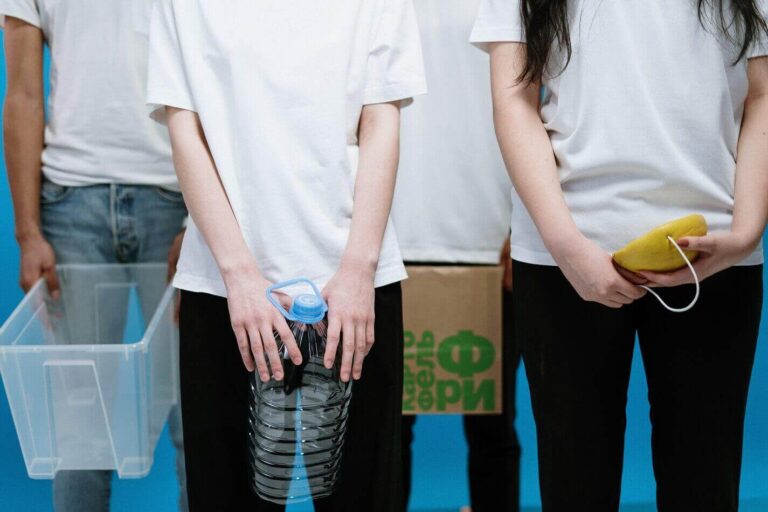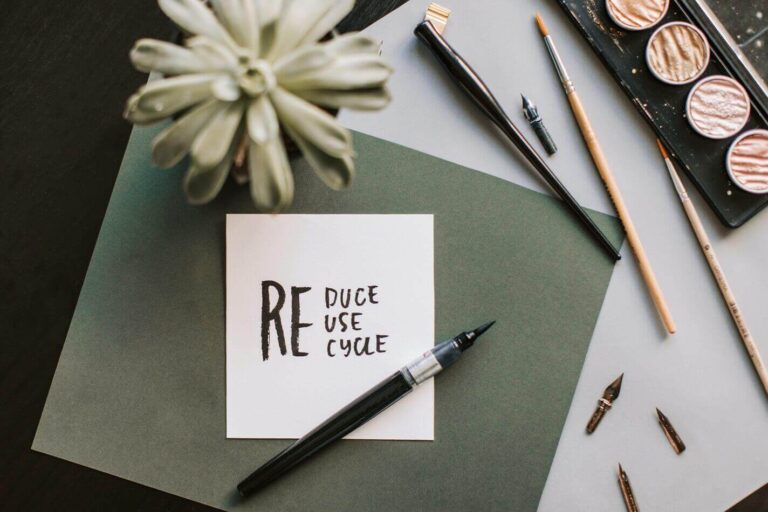How To Get Rid Of Your Waste Responsibly Without Harming The Environment | Sustainable Living
kas ir ilgtspējīga dzīve?
In recent years, we have seen an increasing consciousness about the environmental footprint we leave on this planet, as a response to all the consequences our past and current actions have on the environment surrounding us. Nenoliedzami ir mūsu ietekme uz šo pasauli un nepieciešamība to drīz mainīt, un tieši šeit tiek izmantota ilgtspējīga dzīvesveids.
What is sustainable living, you may ask? Ilgtspējīga dzīve sastāv no darbībām, ko veicam ikdienas dzīvē, lai līdz minimumam samazinātu ietekmi uz vidi., either by eating a sustainable diet, finding ways to reduce waste, consuming fewer things we don’t need… Mums ir daudz iespēju, no kurām izvēlēties, kad runa ir par ilgtspējīgāku un videi draudzīgāku dzīvesveidu.
Noslēgumā jāsaka, ka ilgtspējīgs dzīvesveids ir tāds, kura mērķis ir samazināt mūsu ietekmi uz vidi uz šīs planētas, pasauli, kuru mēs diemžēl iznīcinām ar savu neuzmanīgo rīcību katru dienu un kuru mēs nekad nevaram aizstāt.We highly recommend that you first check out Kā ievērot ilgtspējīgu uzturu mājās.
how you can reduce waste at home and live more sustainably
Ir daudz veidu, kā sasniegt ilgtspējīgu dzīvesveidu, viens no tiem, protams, ir samazināt atkritumu daudzumu, kas ir viens no mūsu eksistences vispiesārņotākajiem un materiālajiem blakusproduktiem. Doing so is no easy task either, but with just a few small changes in our habits, we can achieve a massive change for the better in this world. To sakot, šeit ir labākie veidi, kā samazināt atkritumu daudzumu un dzīvot ilgtspējīgāk mājās:
- Pārstrādāt,viens no labākajiem veidiem, kā rīkoties ar mūsu radītajiem atkritumiem, ir to pārstrāde. Mēs ne tikai pārliecināmies, ka atkritumi vēl vairāk nepiesārņo mūsu upes, jūras, ūdeņus un augsni, bet arī pārliecināmies, ka atkritumiem piešķiram otru dzīvi, samazinot vajadzību radīt vairāk materiālu, kas galu galā nonāks. piesārņo mūsu planētu vēl vairāk. Pārbaudiet, cik viegli ir pārstrādāt, izmantojotVides aizsardzības aģentūras raksts.
- komposts,this is a great way of handling organic waste, like banana peels, coffee grounds and filters, eggshells… By composting at home you can make sure that your organic waste is not taking up unnecessary space in the landfill, and resources to transport it to the landfill, but also avoid polluting the air with methane that is produced in the landfill. Not only that, but you are also creating a new type of soil enrichment full of nutrients that help new plants grow and thrive, without the need for potentially harmful fertilizers and other man-made nutrients. Overall, composting is something that is really worth doing at home and could have many benefits to it, pārbaudiet šo rakstu to dive deeper into this subject.
- Atkārtoti izmantot,vienlīdz svarīgs solis, lai samazinātu atkritumu daudzumu un ietekmi uz vidi, ko mēs atstājam uz šīs planētas, kaut ko izmantot atkārtoti, nevis izmest, tas ir lielisks risinājums, kas ietaupa ne tikai vidi, bet arī ietaupa naudu, ko būtu iztērējis kaut kam, ko noteikti darīji. nav jāpērk. Šī ir viena no iecienītākajām atkritumu samazināšanas metodēm, jo cilvēki ir ekonomiski stimulēti to darīt.
- Anaerobā gremošana,šī ir diezgan interesanta tēma pati par sevi un lielisks veids, kā rīkoties ar mūsu atkritumiem, tas sastāv no tā, ka baktērijām tiek ļauts sadalīt mūsu atkritumus noslēgtā konteinerā vai ģeneratorā, radot dažādus blakusproduktus, piemēram, biogāzi vai digestātu, ko varētu izmantot kā produktīvus materiālus atkritumu radīšanā. citi noderīgi produkti.
- Samazināt,Šis ir viens no vienkāršākajiem veidiem, kā samazināt atkritumu daudzumu, vienkārši samaziniet nevajadzīgo lietu patēriņu un kopumā radīsit mazāk atkritumu. Jums nav jābūt lētam slidotājam, jums tikai jāpadomā pirms pirkšanas (lielisks veids, kā to izdarīt, ir izmantot 7 dienu noteikumu, pagaidiet 7 dienas pirms kaut ko iegādājaties, lai redzētu, vai tiešām to vēlaties vai vajag , jūs būsiet pārsteigts, kad pārstāsiet vēlēties preci jau pēc dažām dienām), jūs ne tikai samazināsit atkritumu daudzumu, bet arī varēsit būt daudz finansiāli brīvāks.
Overall, these are the best and simple ways to reduce waste in your own home, we are going to go into more detail about all of them in a second, so you can learn more about them and how you can do them at home.

the three r's in a sustainable waste reduction plan
We have seen the best ways to reduce waste at home, and you may have noticed that many of the ways we have seen start with the letter R, that is no coincidence (or maybe it is), because they are part of the famous three R’s of a sustainable waste reduction, which are a great way of remembering the steps to take to live more sustainably, here is what you need to know:
The three R’s stand for Recycle, Reuse and Reduce, which is what we talked about before. Recycling, reusing, or reducing our consumption alone are great ways to improve our sustainability, but the real magic comes when we combine these all. If you can reduce your consumption, reuse the things you already own instead of throwing them away, and recycle your waste, you can really reduce your environmental footprint to a minimum.
So now you know, you can achieve the most out of products you own by implementing this simple and straightforward three R’s rule, but you may surely already know that, so why don’t we go to the next point?

composting and organic anaerobic digestion
The next step is to reduce the impact of your organic waste because even this type of waste has an environmental impact on our planet. You can do this by composting organic materials, which creates a natural nutrient-rich fertilizer that the plants need to thrive. We already have talked about this so let’s go to a very common question about composting and anaerobic digestion.
What is the difference between composting organic waste and anaerobic digestion? Atbilde ir vienkārša, kompostēšana ir organisko atkritumu sadalīšanās process ar skābekli, savukārt anaerobā fermentācija notiek bez skābekļa vai gaisa. The process of decomposing is quite similar, as we have seen before.
Kā mājās izveidot anaerobās gremošanas ierīci, lai dabiski sadalītu organiskos atkritumus un ražotu noderīgu metānu un mēslojumu, ko varat izmantot sev? Well, they say a picture is worth a thousand words, and a video is composed of thousands of photos, so you may be interested in this video that will show you just that:
kopsavilkums
We hope you have learned a lot today about how to reduce your waste because so did we. The most important takeaway is that it is not hard to achieve a sustainable lifestyle following these directions, you just have to start doing them, you will never reduce your environmental footprint if you don’t ever start doing something to change it.
Mēs esam priecīgi mācīt cilvēkus visā pasaulē 🙂 Tāpatvai jūs tiešām zinājāt, kas patiesībā ir Fast Fashion un tās briesmīgās sekas uz vidi, planētu, darbiniekiem, sabiedrību un ekonomiku?Vai jūs precīzi zināt, kas ir lēnās modes vai ilgtspējīgas modes kustība?Jums patiešām vajadzētu apskatīt šos rakstus par šo aizmirsto un nezināmo, bet ļoti steidzamo un svarīgo tēmu,noklikšķiniet šeit, lai lasītu "Vai mode kādreiz var būt ilgtspējīga?",Ilgtspējīga mode,Ētiskā mode,Lēnā modevaiĀtrā mode 101 | Kā tas iznīcina mūsu planētujo zināšanas ir viena no spēcīgākajām priekšrocībām, kas jums var būt, savukārt neziņa ir jūsu sliktākā vājība.
Mums ir arī liels pārsteigums jums!Tā kā mēs vēlamies sniegt jums tiesības mūs labāk iepazīt, esam sagatavojuši rūpīgi veltītu lapu Par mums, kurā pastāstīsim, kas mēs esam, kāda ir mūsu misija, ko mēs darām, tuvāk mūsu komandai un daudz ko citu. lietas!Nepalaidiet garām šo iespēju unnoklikšķiniet šeit, lai to pārbaudītu.Tāpat mēs aicinām jūs uzieskaties mūsuPinterest,kur mēs piesprausim ikdienas ilgtspējīgu modi saistītu saturu, apģērbu dizainu un citas lietas, kas jums noteikti patiks!
Izplatiet ziņu:
- Noklikšķiniet, lai kopīgotu vietnē Pinterest (atveras jaunā logā)
- Noklikšķiniet, lai kopīgotu pakalpojumā Twitter (Atveras jaunā logā)
- Noklikšķiniet, lai kopīgotu Facebook (atveras jaunā logā)
- Noklikšķiniet, lai kopīgotu vietnē WhatsApp (atveras jaunā logā)
- Noklikšķiniet, lai kopīgotu vietnē Reddit (atveras jaunā logā)
- Noklikšķiniet, lai kopīgotu vietnē Telegram (atveras jaunā logā)
- Noklikšķiniet, lai kopīgotu vietnē LinkedIn (Tiek atvērts jaunā logā)
- Mrūdas
